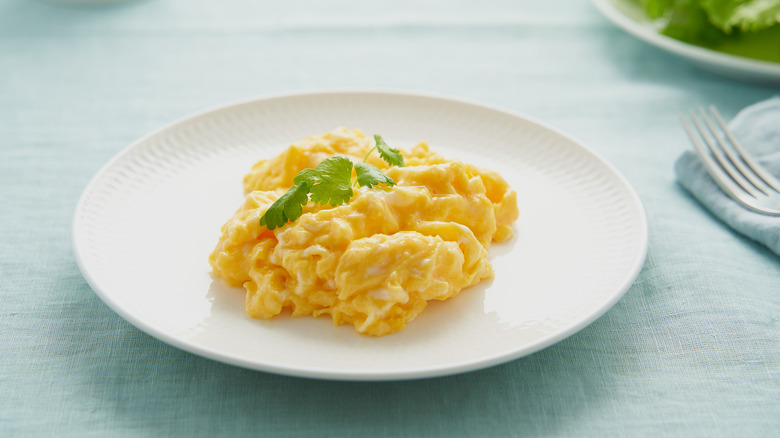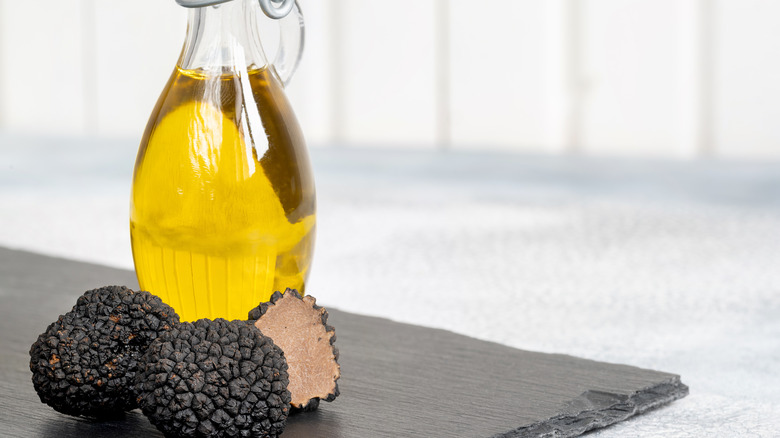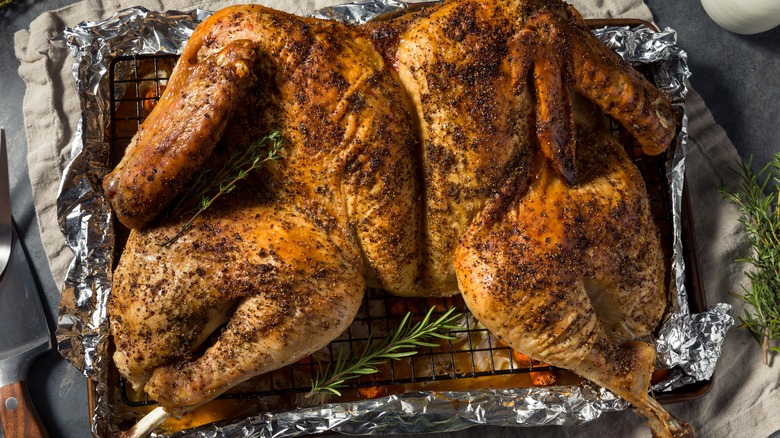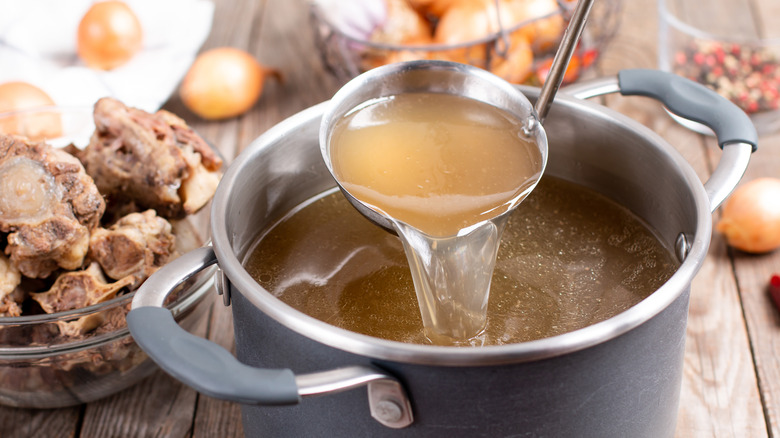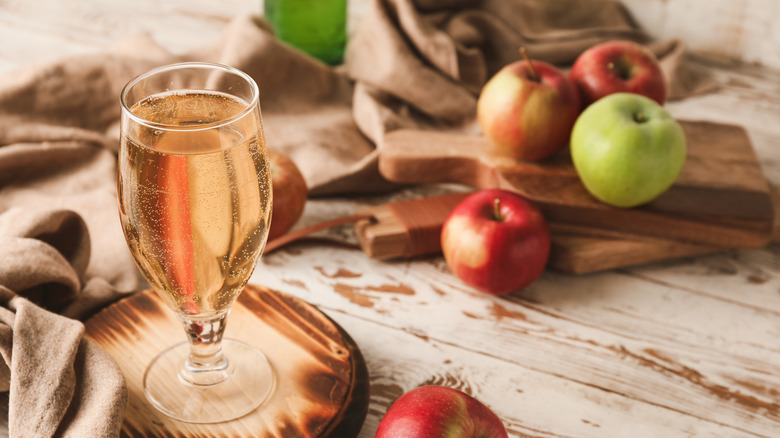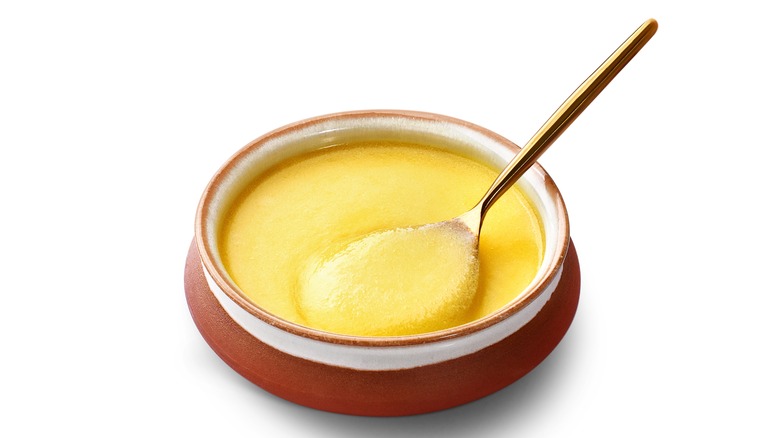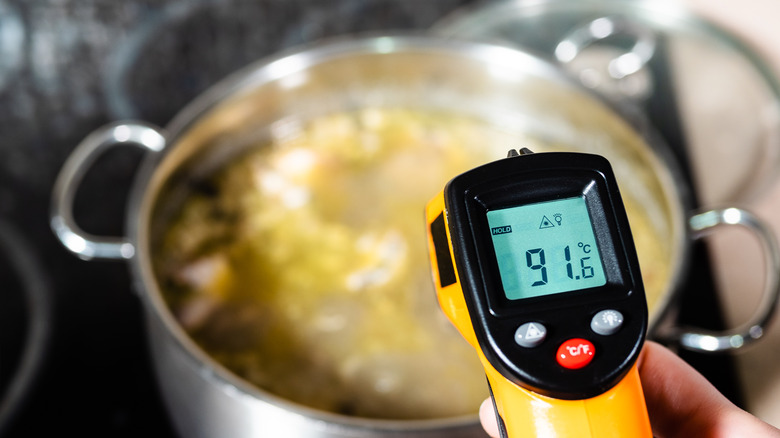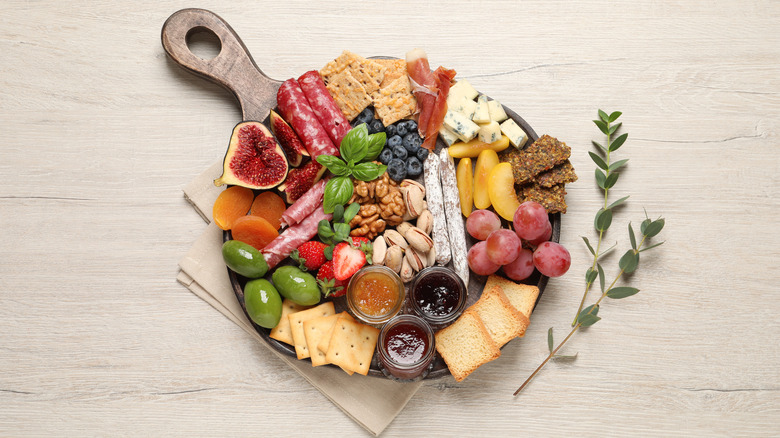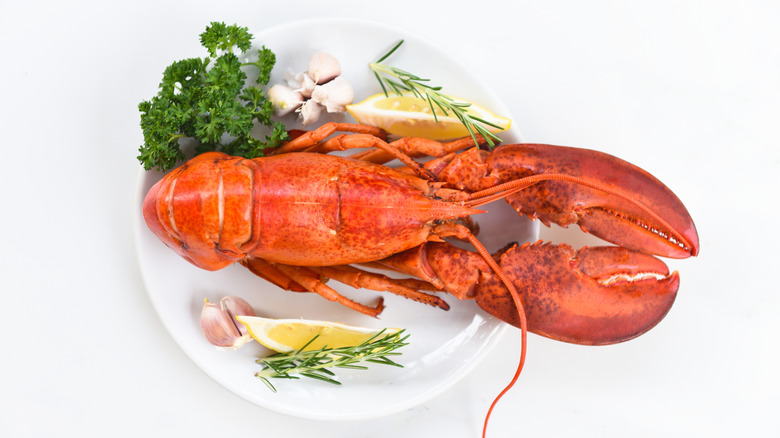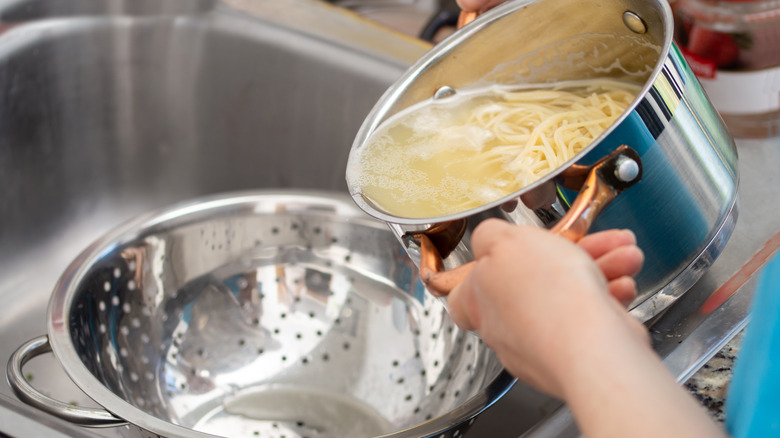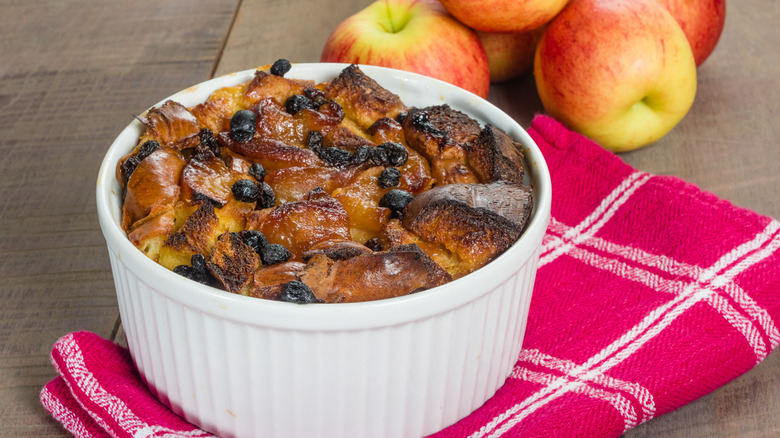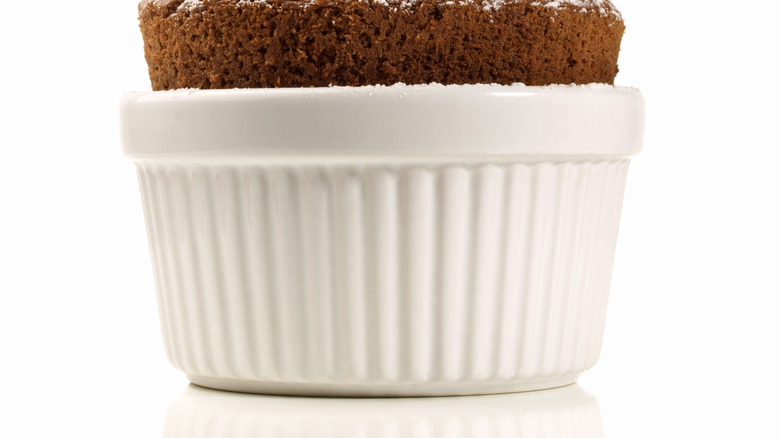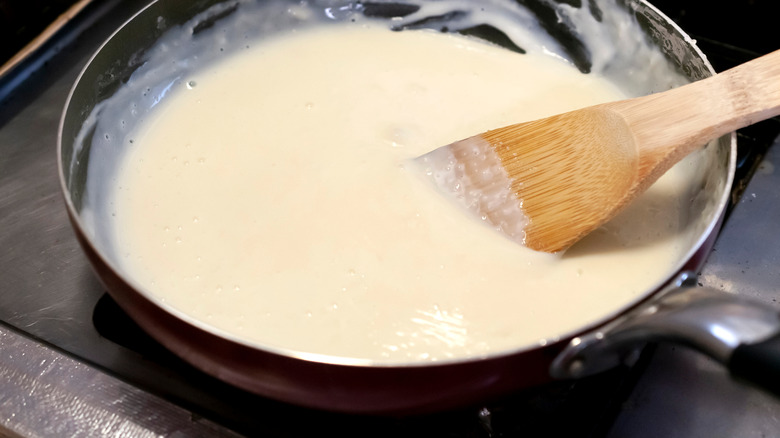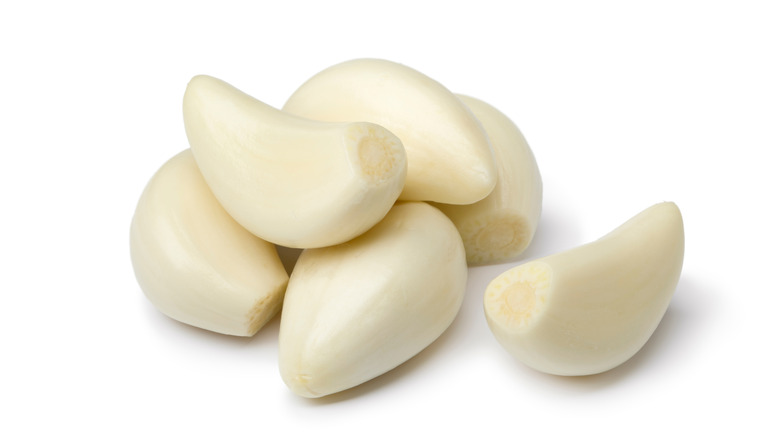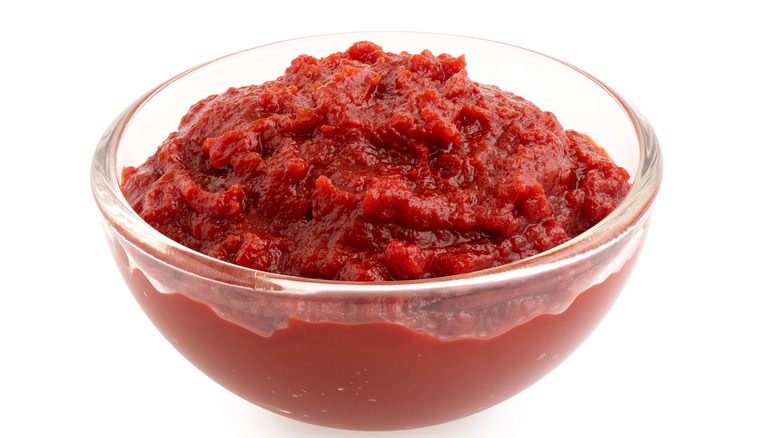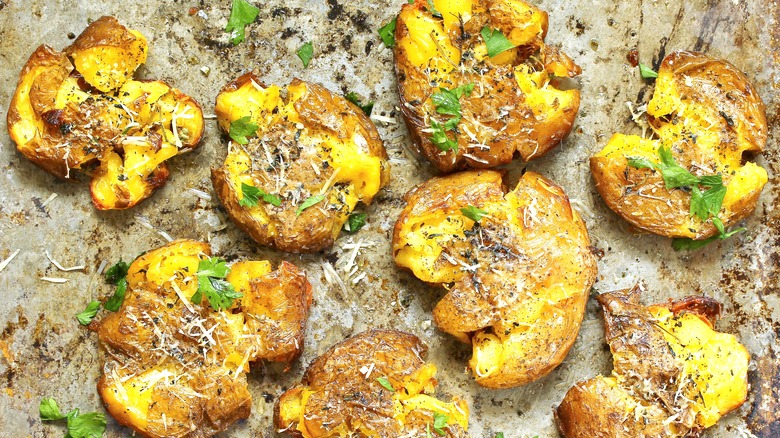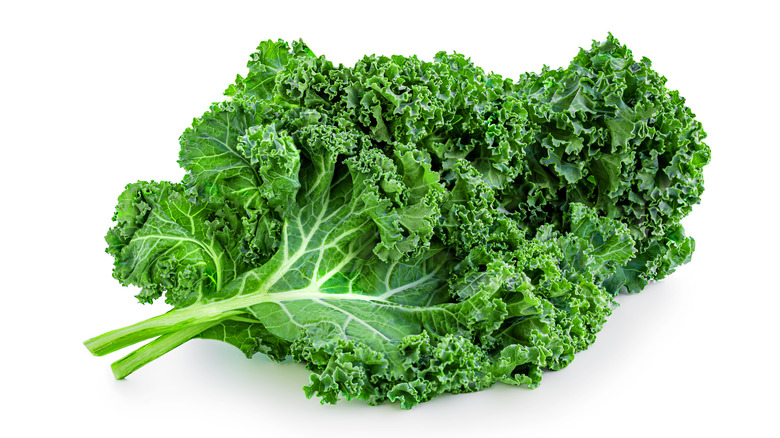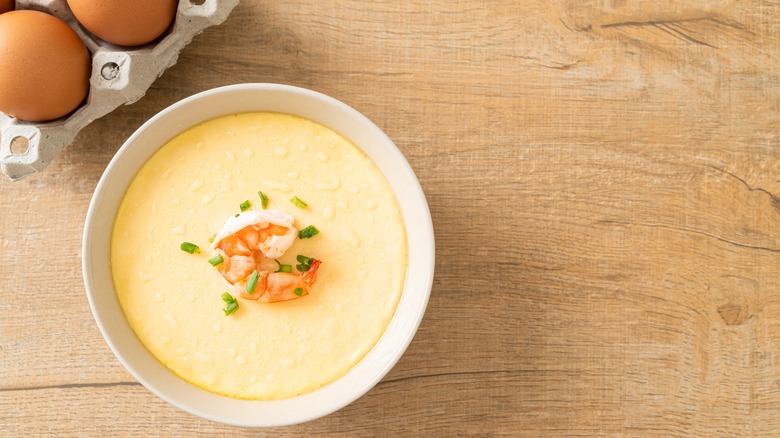Martha Stewart's 20 Best Cooking Tips For Home Chefs
It's hard not to love the vivacious spirit of food and lifestyle legend Martha Stewart. She was the first self-made female billionaire, according to Forbes, which was the direct result of her empire, Martha Stewart Living Omnimedia. But Martha Stewart wasn't always as interested in food as you may think. She started her life as a student at Barnard College and a model. After a short stint of working on Wall Street, Stewart began her empire as a catering business, (via Martha Stewart), and shortly after, published her first book. After she published several more cookbooks, her magazine entitled Martha Stewart Living launched in 1990 followed by a television show in 1993. Besides her media empire, Martha Stewart owns a CBD company called Canopy Growth, a meal kit company called Marley Spoon, and a wine company. The better question may be, what doesn't Martha Stewart do?
Although the mogul stays busy with her numerous pursuits, Stewart also finds the time to educate and teach DIY home cooks ways to make cooking (and by association, entertaining) easier. Here are some of her top tips for home chefs.
Only pair gifted wine that goes well with the food served
If you've hosted a dinner party, you likely received an onslaught of gifted wine from folks who felt obligated to bring "something" to the party. While some wines are great pairings for the meal you've prepared, others are likely not a great fit. Since the bottles are gifts, are you obligated to serve the wine at your party?
The entertaining goddess Martha Stewart thinks the answer is no. Even if your guests brought wine for a specific dish or course, she notes that should never feel guilty for placing that wine in your closet and forgetting about it for a while. As a dinner guest, you shouldn't expect your host to open the bottle immediately; they may instead reserve the bottle for another special occasion or for drinking in private after the guests all leave.
Use a stem wand to make scrambled eggs
Martha Stewart enjoys scrambled eggs from time to time, but she makes them without a skillet — or a microwave. Instead, Stewart turns to the steam wand on her espresso machine. She calls the dish "scrambled eggs à la cappuccino machine." To make this recipe, she cracks eggs into a clear coffee cup with a bit of butter, salt, and pepper. Then, she uses the frothing feature on her machine to create fluffy scrambled eggs in a matter of minutes.
Not everyone is a fan of Stewart's egg hack for both sanitary reasons and practicality. And although we have a lot of respect for Martha, isn't cleaning a skillet much easier than a steam wand covered in flecks of an egg?
Avoid using truffle oil
Truffle oil has gained popularity in recent years as a finishing oil for French fries, meat, and almost everything in between. And while you may feel like a bougie chef for using truffle oil in your cooking — you shouldn't. Truffle oil contains no real truffles and is more of a marketing gimmick than a quality ingredient.
Martha Stewart is one chef you'll never see using truffle oil. In an interview with TODAY, Stewart called truffle oil synthetic, fake, and horrible. She also despises how the flavor of the oil lingers on the mouth and easily overpowers what would be an otherwise beautiful dish. If you want to add a finishing oil to your food, we recommend sticking with a high-quality and earthy extra virgin olive oil (EVOO).
Always spatchcock turkey
Thanksgiving is one of the most stressful holidays for home cooks. But with Martha Stewart's hack for a quicker cooking turkey, you can enjoy a more relaxing holiday cooking experience. Her go-to cooking method for turkey is spatchcocking. Spatchcocking removes the turkey's backbone, meaning that the bird can lie flat on the rack and roast quicker than a whole-bird method. Spatchcocked turkey can be seasoned with a variety of spices including thyme, oregano, and rosemary.
Stewart cooks her turkey for about an hour and a half with the stuffing underneath it. In comparison, whole birds can take upwards of four hours to cook completely. And for a woman that estimates she's cooked upwards of a thousand turkeys in her life and has written over 70 books on how to throw a great dinner party, (via PBS), we don't think we can disagree with her.
Rinse out the roasting pan for beef stock
Anyone who has made a French onion soup knows the importance of hearty beef stock. This vital kitchen ingredient is made by simmering beef bones, aromatic spices, and a mirepoix for several hours to allow the bones to release collagen and thicken. Martha Stewart's recipe for beef stock, as shared on her YouTube channel, involves roasting oxtail and veal bones for 45 minutes before adding veggies and cooking for another 40 minutes. After the ingredients have been roasted, Stewart recommends adding everything to a stockpot, deglazing the roasting pan with red wine before adding it back into the stockpot.
Stewart is a big fan of the flavor left behind in the roasting pan after it's been deglazed. She takes the extra step to add a few inches of water to the pan to remove any caramelized flecks of food or red wine residue and adds it back into the stockpot.
Use apple cider often
A little bit of sweetness can go a long way in the kitchen. Martha Stewart's favorite way to add sweetness to her food is to incorporate apples. She presses her own apple cider on an episode of "Martha Cooks" and uses the cider as a way to craft special beverages for her dinner parties, as well as for regular use in some of her favorite autumnal recipes.
One such recipe is her bourbon cider cocktail made with cider ice cubes — which prevents the alcohol from becoming too watered down. Stewart also pairs the flavors of apples with her pork loin; she loves to stuff her roast with apples, white wine, and butter to impart a boost of autumnal flavors. We can also see apple cider glazed pork in her future.
Use clarified butter for more flavorful eggs
Clarified butter is a unique type of butter made by straining the milk solids out of the rest of the butter. The result is a more pungent, strong butter flavor with a higher smoke point that can be used for frying, spreading, and cooking. Martha Stewart recommends using clarified butter for scrambled eggs for a more decadent flavor. She recommends starting with a high-quality, high-butterfat butter like Kerrygold.
As the butter cooks over low heat, you can pull the thick foamy layer on top of the butter off. Then, add your clarified butter foam to your pan and cook your scrambled eggs as normal. Besides cooking your scrambled eggs with clarified butter, we also recommend cooking your eggs low and slow for the perfect soft and fluffy scrambled eggs.
Never boil stock
If you've ever made stock at home, you know how long and arduous the process can be. Simmering bones and vegetables for up to eight hours can take a lot of time out of your day. But can you speed up that process by just boiling your stock away on the stove?
Martha Stewart thinks the answer to that question is a definitive "no." She notes that if you boil stock rather than allow it to simmer, it will result in a cloudy stock. On a molecular level, increasing the heat of the stock will cause the flavor molecules to move around faster. That means the bone fat will quickly be bombarded with the fast molecules and cause the fat to emulsify into your stock. If you aren't a fan of waiting, you might as well just buy stock from the store.
Use a T-shirt if you don't have a cheesecloth
Cheesecloth is a kitchen tool that you may not have on hand. Martha Stewart recommends, in a pinch, using a clean T-shirt as an alternative to a cheesecloth. Cheesecloth is a woven cloth used to strain — you guessed it — cheese, herbs, stocks, and broths. The texture of the cheesecloth fabric is ideal for removing small particulates and allowing liquid to easily pass through. Stewart recommends using a T-shirt as your next best option.
Although the weaving of your cloth might not capture every small particulate, it does an acceptable job in larger applications, such as cheesemaking. If you can't spare a T-shirt, you can also use a kitchen towel — just make sure you stick to a thin tea towel rather than a woven one to ensure that liquid can easily pass through it.
Use height differences to give your charcuterie board a fuller shape
A beautiful charcuterie board is bound to get the attention of all of your party guests. As the queen of entertaining herself, Martha Stewart has a couple of tips for home cooks on making an extravagant charcuterie board. To give the board a fuller shape, Stewart recommends using a series of risers and small plates. She recommends getting the cheese off the board completely and placing the slices or wedges on separate plates. Then, you can arrange the cheese with risers and lifts to make a more buffet-style and eye-popping setup.
Stewart also recommends making sure that you have enough knives for the different kinds of cheeses you're serving. This will prevent the flavors of the cheese from becoming muddled with one another.
Cook lobster in vodka
Martha Stewart's rule for cooking lobster brings her straight to her liquor cabinet. The food personality cooks her lobster in a mixture of water and vodka. Although this mixture may seem a bit unique, it has a very practical application in cooking.
When the vodka evaporates, it leaves behind a more pronounced flavor, which for the lobster, means more complex sweet and savory flavors. Stewart also notes that it is important to curb the cooking time for lobster to around 18 minutes to prevent drying out the shellfish entirely. Should you cook your lobster correctly, you'll find you don't have to add a ton of additional seasonings to the pot to get the perfect fresh-from-the-sea flavor at your next lobster cookout.
Reduce the steam from pasta water by running cold water
If you wear glasses and make pasta frequently, you can understand how frustrating it can be when you pour out the water from the pot and are met with a cloud of steam that leaves you unable to see. To combat this all-too-familiar phenomenon, Martha Stewart recommends decreasing steam while draining pasta by running cold water in the sink while you're pouring the water from the pot. You should avoid running the water into the colander, Stewart notes, as this would wash the pasta.
When pouring water out of your pot, regardless if you use this kitchen hack or not, you should always have oven mitts on to prevent scalding yourself if the water bounces onto your skin.
Sprinkle sparkling sugar on bread pudding
There might not be a more homey dish like bread pudding. To make your bread pudding extra sparkly, Martha Stewart recommends adding course sparkling sugar to the top of your bread pudding. Not only does this addition make your bread pudding sparkle and shine, but it also adds a coarse texture that contrasts with the softness of the bread pudding. Sparkling sugar can also be sold under the moniker "sanding sugar." It is made of large-grain sucrose crystals and is often used for decorating foods like cookies or freshly baked muffins.
The sugar is finished with a confectioner's glaze — which gives the sugar an extra shiny boost. You can purchase translucent sparkling sugar or opt for a more colorful product for your next homemade bread pudding.
Make a hole in your soufflé
Any damage to a precarious soufflé is usually thought of as a tragedy. Martha Stewart, however, encourages foodies to properly eat a soufflé by making a small hole in the center of the dessert. She then drizzles crème anglaise, a sweetened custard, into the hole before topping the entire thing with a hefty layer of whipped cream. The hole in the soufflé causes the crème anglaise to evenly disperse and flavor the entire soufflé.
If you don't have crème anglaise, which can be made with egg yolks, sugar, and cream, you can use a bit of melted ice cream to replace it. And if you're in a restaurant, be sure to order everything for your perfect DIY soufflé — thanks to Martha Stewart.
Make a béchamel sauce for creamy mac and cheese
Macaroni and cheese doesn't have to be just melted cheese and pasta — it can be made even more decadent with the addition of another creamy ingredient. To avoid mealy macaroni and cheese, Martha Stewart recommends making a béchamel sauce to add to your pasta and cheese. Béchamel is considered one of the four mother sauces and is made by cooking a roux (flour and butter) with warm milk until thick and creamy. While this extra step may require extra time, it does add more creaminess to the macaroni and cheese and makes it all the more memorable.
Martha Stewart also adds cayenne pepper and nutmeg to her baked macaroni and cheese. She also plates her pasta with a dollop of sour cream, which she believes provides contrast to the pasta.
Use two bowls to peel garlic
Home cooks have argued for years about the best way to peel garlic. Martha Stewart's garlic peeling hack is to place an entire head of garlic in a mixing bowl. Then, she places a smaller bowl on top of the head and gently pressed down to remove the peels from the pieces without having to clean the individual cloves by hand. Once the cloves have loosened, she flips the bowl over to make a sphere encasing the cloves and shakes vigorously to shake the peels loose from the cloves. After about 30 seconds, the peels and the garlic will separate and become easy to pick apart.
This hack is perfect for recipes requiring a ton of garlic cloves, like tomato sauce or garlic-infused olive oil.
Freeze and slice tomato paste
Canned tomato paste is an ingredient you have to have in your kitchen. You can use leftover tomato paste to make a unique barbecue sauce or add flavor depth to a curry. If you don't have an immediate use for tomato paste, Martha Stewart recommends leaving the lid attached to the can and opening up the other end with a can opener. Then, wrap the entire container in plastic wrap and freeze overnight.
When you're ready to use the paste, use the lid-end as a pushing piece and remove the contents of the can — which will resemble a tube. You can slice off the portion that you need with a sharp kitchen knife and freeze the rest in plastic wrap.
Smash your baked potatoes
As a hostess, Martha Stewart works a lot with potatoes. She shared a hack for baked potatoes on her TikTok account in which she baked her potatoes and then smashes them on the counter. She notes the trick is to smash "just hard enough to break up and fluff the interior without completely breaking all the skin." Martha Stewart admitted on a separate Instagram post that her go-to potatoes for this hack are russets, but she did try mixing in a few Yukon golds and was pleasantly surprised with the result.
Stewart then tops her potatoes with very extravagant toppings like butter, crème fraîche, and roe caviar. But, we argue there's nothing wrong with the classic butter and sour cream combo.
Use a metal spoon to de-rib kale
Martha Stewart might seem like she has a hack for everything — kale included. To remove the hard, center rib of the kale, Stewart uses a metal spoon. She places the stem through one of the drain holes and pulls upward to separate the leaves from the stem. If you try to recreate this trick at home, you should push the leaf toward the edge of the spoon or tear the leaf a little at the base to get started. You should also avoid using a spoon with large holes.
If you don't want to dirty a kitchen utensil, we recommend grabbing the bottom of the stem with one hand and ripping the leaves off with the other. This one sweeping motion is the fastest way to de-stem kale.
Hone your egg steaming skills
In an exclusive interview, Martha Stewart revealed that one of her favorite ways to eat eggs is to steam them. To make these eggs, she places the eggs in a rack over a covered pan and brings the water to a boil. Depending on what kind of egg she wants, she recommends leaving the eggs over the steam for between three and five minutes. She notes that these eggs are not only silky smooth and delectable, but they also peel super easily. Her go-to soft egg has a set and sturdy white with a yolk that is "beautiful, gold, and runny."
And if you're wondering about her egg credentials, we can assure you that Stewart is well-endowed. Her own chickens produce between 60 and 100 eggs per day.


